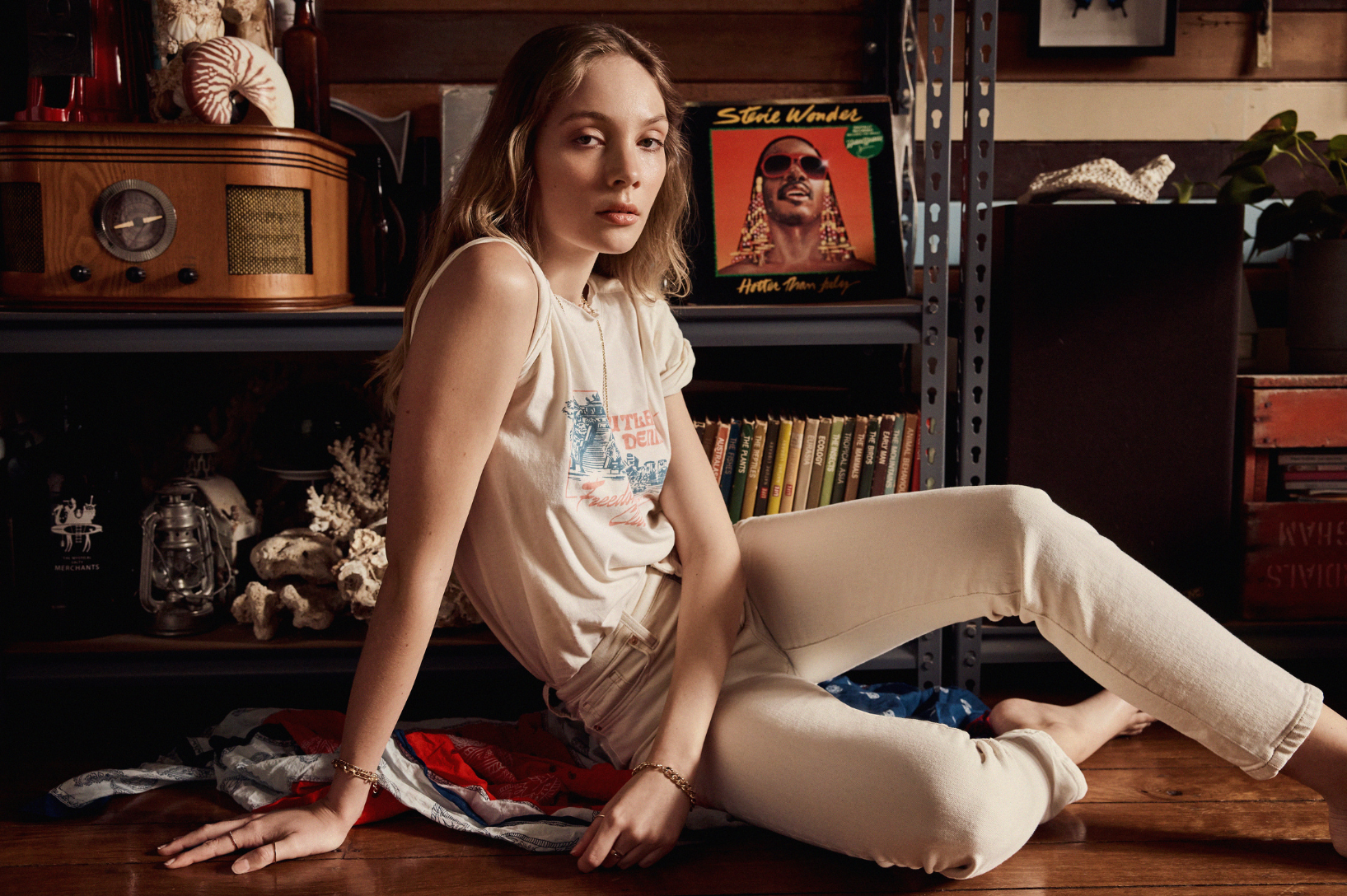Is Vegan Leather actually better for the environment?
Since October 2018, searches for “vegan leather” have skyrocketed by 119%. Turns out it’s not only vegan food the world is hungry for, but vegan fashion too. High street brands, like Topshop, are embracing vegan leathers’ debut, and even Dr Martens have launched an animal friendly version of their globally adored classic boot. Vegan leather seems like the obvious ethical and environmentally friendly approach to a US$40 billion leather industry that mistreats animals, exposes workers to harmful chemicals, and pollutes.

Since October 2018, searches for “vegan leather” have skyrocketed by 119%. Turns out it’s not only vegan food the world is hungry for, but vegan fashion too. High street brands, like Topshop, are embracing vegan leathers’ debut, and even Dr Martens have launched an animal friendly version of their globally adored classic boot. Vegan leather seems like the obvious ethical and environmentally friendly approach to a US$40 billion leather industry that mistreats animals, exposes workers to harmful chemicals, and pollutes. But we’re calling vegan leather’s bluff. Vegan leather isn’t always best for the planet, workers, or animals.
Don’t sweat, we’re not ruling out vegan leather altogether. We’re simply here to remove your vegan tinted glasses and explain the effects of both.
Not-So-Great Vegan Leather
We all know conventional leather is made from animal hide (that’s their skin by the way), so to put it simply: vegan leather is not.
Vegan leather is made from anything that does not come from an animal, but serves the same purpose as leather. It generally looks and feels the same too. The trouble is, vegan leather is most often made from polyvinyl chloride (PVC) or polyurethane. Both of these materials are made from fossil fuels and take many centuries to break down. Does that sound environmentally friendly to you?
To make it worse, PVC is very rigid, so a phthalate is added to make it flexible and wearable. “What’s a phthalate?” We’re glad you asked. Phthalates are highly toxic for the human body and the surrounding environment. They’re even banned in several countries! It’s kind of a no brainer that you wouldn’t want a banned chemical on your handbag or leather belt, right? Although PU is most popular these days (celebrate the small wins!), PVC is still used to create faux leather products, and the combination of plastic and chemicals is less than ideal.
All this, and we haven’t even discussed the impact vegan leather production can have on the workers who make the products. These workers can breathe in damaging chemicals for 12+ hours a day. If these chemicals get into surrounding waterways, the villages nearby can also be at risk of increased cancer rates and other serious illnesses, too.
Plastic based vegan leather is not great for you, workers, or the planet. But don’t bow your head and give up on vegan leather just yet; not all vegan leather is nasty.
Good Vegan Leather
The rise in demand for vegan leather that a) doesn’t come from animals and b) doesn’t hurt the environment has pushed designers to find sustainable and ethical leather alternatives in order to keep up with consumer demand. The practice of crafting cowhide into a wearable leather has been around for centuries (some even suggest since 1200BC!), but with new technology and innovation, we’re using all sorts of resources to make fabrics that act just like leather, minus the animal.
The vegan leather industry is an innovative one. Vegan leather can be made from many plant-based fibres, including pineapple leaves (Pinatex), cactus (Desserto leather), cork, mushrooms, coconut husks, kombucha scobies, mango, seaweed and apple peels. Lab-grown leathers like MYLO, an “unleather” material made from mycelium, are also bursting onto the fashion scene.
Because these fibres are often bi-products of the food industry, they’re not creating a demand for a resource or extracting more from the planet, rather using up what would have otherwise been thrown away. For example, Pinatex is made from pineapple waste. A pineapple plant only flowers and produces a fruit once, so its stem and leaves are usually wasted. Pinatex is made from the fibre in pineapple leaves, and the rest of the plant is composted. Plant based, waste-reducing leather alternatives are a win for both vegans and environmentalists.
Please note: it sucks, but you cannot always jump for joy when it comes to eco-friendly vegan leathers. Sometimes, these awesome biodegradable materials are fused with non-biodegradable chemicals in an effort to increase quality. Although this isn’t always the case, try to ensure when purchasing eco-friendly vegan leathers, they are really what they say they are. You can trust our vegan leather brands with this.
Leather leather
Now we know what vegan leather is, let’s get back to our old mate: leather. In the current climate, leather is usually a co-product of the meat industry. This means animals are not culled solely for their hide, but the hide is a bi-product, sold to leather producers for a small amount. The price of leather is generally not high enough for anyone to make money culling animals for leather alone, but it’s a small income stream and the leather does not go to waste.
Unfortunately, the treatment of these animals varies from country to country and factory to factory. If you are okay with wearing animal products, it’s best to know where the leather is from, so you can rest assured the animal was killed humanely. For example, New Zealand has strict animal welfare rules, whereas countries like China and Thailand do not.
From here, it’s also important to consider the impact of agriculture on the planet. The Global Fashion Agenda predict that cow leather has the greatest environmental impact, ranking above synthetic leathers and even polyester. This is due to the impact of cows on the land, including the emissions of greenhouse gases, contamination of surrounding bodies of water, and depletion of natural resources faster than they can be replenished. Though this research only assesses cradle to gate (up until the materials are ready to be made into a product) and does not assess the environmental impact of the product throughout its lifetime and post use, it’s important to acknowledge the potentially damaging effects of real leather – even though it’s a biodegradable co-product.
If you’re okay with donning animal products, wearing a co-product of the animal industry may be an option. It’s totally up to you. But what about production and the tanning process?
For a cow hide to turn into a wearable handbag that does not rot, it must be treated and crafted – otherwise we’d all look a bit like Lady Gaga and her Meat Dress. This process is called tanning. Tanning involves removing water molecules from the hide and soaking it in dehydrating natural tannins or minerals (most commonly chromium sulphate), which replace the molecules and bind the particles together with the collagen present. Essentially, tanning is the process of turning a cow’s skin into a material beautiful enough for you to want to carry over your arm in public.
There are two main ways tanning is practiced.
01. Vegetable tanned leather
The OG tanning method, vegetable tanned leather uses vegetable tannins to displace water in the tanning process. Tannins occur naturally in certain plants, so they ensure the leather is completely biodegradable. Vegetable tanning is done by hand over several months. Because of the material and thoughtful craftsmanship, most vegetable tanned products will last decades, even centuries. Although vegetable tanning is best for longevity and the reduction of chemicals, the process requires a lot of water which can be wasteful if it’s not recycled and reused. Sustainable vegetable tanneries get around this by collecting their rainwater, and treating used water to carry out the tanning process over and over again.
02. Chrome tanned leather
Vegetable tanning takes a lot of time, so naturally, humans found a chemical process to replace the natural resources and speed things up. Hurray for us (sarcasm intended).
Chromium sulphate is the most commonly used compound in the chrome tanning process. Chrome ions replace the water molecules, and if the tanning plant does not have a filtering process, the toxic wastewater can affect surrounding water systems and soil. Sure, chrome tanning may use less water than vegetable tanning, but the final product does not last as long, and has a significantly negative effect on the environment. Some chrome tanneries recognise their impact, and reduce this by using a closed loop system to ensure chemicals are not leached into the environment. They may also implement strict policies to avoid workers ever coming into contact with the chemicals too.
If you’ve gotten this far down our (slightly lengthy) comparison of vegan versus conventional leather, good job. You’re probably as confused as us. Currently, leather is like the relationship with the ex who still lives with you: very complicated.
The best way to shop for leather, regardless of whether it’s vegan or not, is to first consider how long it will last, how many times you will use the product, and who made it. Educate yourself on how the leather is made, and purchase the item if you personally sit well with the story behind it. Second hand leather, both vegan and not, is a middle ground many leather consumers choose to stick to.
Sustainable fashion is not black and white, and the vegan leather debate is the perfect reminder.
If you’re scouting a second hand shop, chances are, labels may have fallen off in the garment’s previous life. It’s up to you to determine what type of leather the product is. Here are a few hints.
The product is most likely a plastic leather if it:
- Smells fishy
- Smells strangely like chemicals
- Looks shiny
- Seems waterproof (place a drop of water on the leather, if it’s plastic, it won’t absorb)
- Has perfectly machine cut edges
The product is most likely real leather if it:
- Has imperfections (variations) in colouring and markings
- Wrinkles when you squish it
- Smells natural and musty
- Has raw and varied edges
- Looks worn
- Slowly absorbs water
Bags are a main leather commodity. With this in mind… here are places to shop for vegan leather bags we trust:
- A_C Official & use ‘ETHICALMADEEASY’ for 10% Off
- Velvet Heartbeat
- Duffle & Co & use ‘EME’ for 20% Off
and places to shop for real leather bags we trust:
- Duffle & Co & use ‘EME’ for 20% Off
- Simétrie
It’s also important to understand how to take care of your leather products, vegan or otherwise. The Only Ethical Care Guide You’ll Ever Need For Your Clothes gives you a few tips on our how to take care of your leather products so you can continue to enjoy them for years to come.



